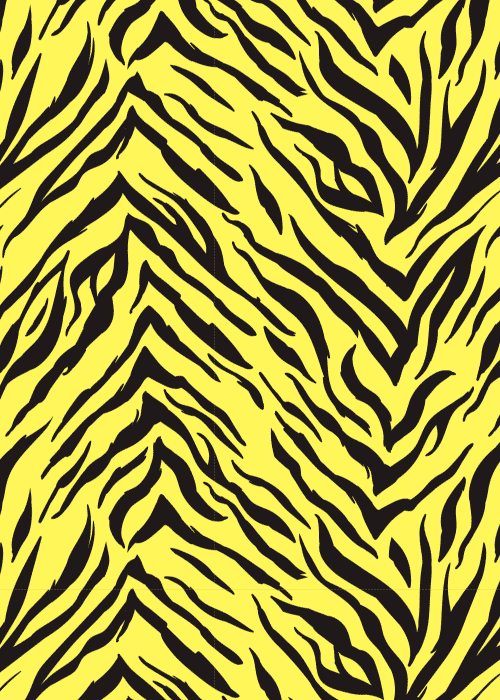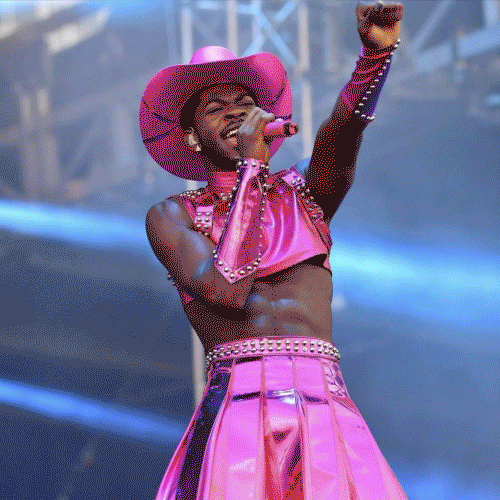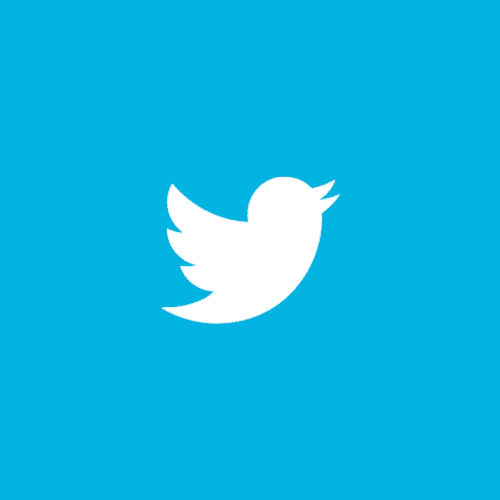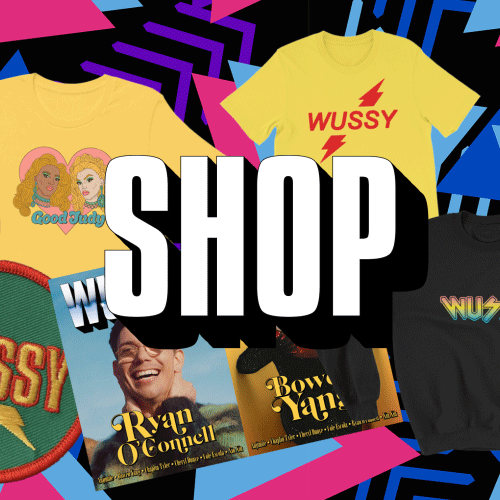Artist Barry Lee on Bisexuality & Disability Activism Through Art
PHOTO: BARRY LEE
Barry Lee is no stranger to the streets of Atlanta -- or the walls.
The bright colors and soft lines of his playful murals can be seen on the streets of Cabbagetown or tucked cheekily into a corner of Octane - Westside, among many other places. Though he’s known for his whimsical illustrations, Lee is experimenting with new mediums in his upcoming show, How Nice, an installation of Murmur Media’s ¼ (Quarter) Program.
Murmur’s ¼ Program allows guest curators to use Murmur’s space to serve up some creative realness, working for three months to create a program or event to share with the community. How Nice explores the intersections of Lee’s identity as a disabled, bisexual man through photography, sound and video installations, drawing on a lifetime of experience.
WUSSY was able to sit down with Barry Lee to dig deeper into the thoughts behind his art.|
---
WUSSY: How did you become a part of ¼ Program?
Barry Lee: I was wanting to build this body of work for a long time and I had come into a really weird place in my life where people were really enjoying the illustrations and paintings that I was doing, but I felt like I needed to say something more because of certain life experiences that kept popping up. [I needed to] start to really focus on my own being, my own psyche in some senses. So I talked to some artist friends and Amanda Mills (founder of Murmur Media) suggested that I apply for the ¼ Program. So, I wrote up a proposal. Originally the proposal was based off of paintings, and they accepted the proposal and we started meeting and things started happening. It turned into a totally non-painting form and show.
WM: So, you’ve been wanting to do this for a while. What made you finally realize that now is the time that you need to do this with your art?
BL: All of my life I deal with people staring at me and asking really invasive questions about my syndrome. My syndrome is very rare. There are only about a hundred recorded cases. So people would mistake me for being in a car accident, being retarded or mentally challenged. I was getting really fed up with these questions, and I was getting really frustrated. I kinda reached a breaking point where I pushed back to the questions and I would tell people, "You know, I don't owe you an explanation for me just living." I started to post these stories and these happenings on Facebook and they gained a lot of traction and people reacted to them. But also, it was sort of a thing where I didn’t want to become that person on Facebook that only complains about these things, these encounters. I felt like I needed to kind of put these encounters and these stories out there to bring awareness and to bring a different narrative to disability because the narratives that come out are very wholesome and very timid. For me, I don't see myself as a sympathetic character. I don't see myself as somebody to sympathize [with]. I wanted to create a body of work that created more empathy and created more understanding and to put you in my shoes, to maybe not change your mind, but to give you a different perspective to what you see.
PHOTO: BARRY LEE
WM: You have these two intersections as both bisexual and disabled. How are these expressed in your show?
BL: I came out as bisexual to friends and family in my early twenties and really came out to myself within the last two years. I think there is a difference in terms of just acceptance and understanding yourself and loving yourself. I felt it was a really important aspect to touch upon my bisexuality and queerness because there's so much bi-erasure going on. When I was younger, I knew I was bisexual ever since I was five. But I grew up in a very small, Southern town where you were either straight or you were (whispers) gay. Growing up in the 90's I never really saw bisexual representation, so it was a very weird thing where I was like “well I like women, but I also like men.” So I was doing this thing where I was really trying to understand what that was, and I definitely shooed that away for a long time because it was just so foreign to me. I wasn't exposed to positive bisexuality.
So, with the show, you see me in very tender relationships with men or women. It's not really a sexual show, in terms of, like Robert Maplethorpe or Tom of Findland-type situations. It's very tender. I think we need to really show that that is a possibility. I would see very non-monogamous characters in bisexuality. There's nothing wrong with non-monogamy if that's what you want, but that was the main portrayal I saw in correlation to bisexuality. I would also see a lot of people not trusting bisexual people. They're the same idea. Just showing somebody who is in these relationships with people is important.
WM: Your other art - your murals and illustrations - are a little more whimsical and far-fetched. How has it been to produce such a deeply personal exhibit?
BL: It's been a tough several months making these pieces because I've been keeping them very tight-lipped and very much to myself. So it hasn't been the easiest, but it's been the most rewarding because it's been truer to myself. I think people see one side of this very cheery portrayal of what I create. I think as artists and as people, we all have different facets of ourselves and we as artists have the right to do different mediums and to challenge our audiences. If you have a platform to challenge your audience, you should. I have a platform. For so many years, I was looking for what I'm making and I had to swallow the realization that I had to be the one to make it. It's a very vulnerable show. It's a little absurdist. Some of it's confrontational, but there is a correlation between my illustration work and this photography work because there's a lot of color, a lot of humor in them. There's a lot of over-exaggeration, as well. So these carry through and bleed through, but it’s just a little more adult and a little more of me.
EW: You use a lot of pink throughout the exhibit. Why pink?
BL: I think pink was always a color that I was fascinated with. It's one of my favorite colors. It's interesting how pink has become this very feminized color. Years and years ago, pink was a very gender-neutral color. I thought it would be interesting to use that color as the main focus. Also, I use a lot of pink in my paintings and illustrations, and I wanted to carry that through as a kind of constant. Also, for me, I don't feel stereotypically male. I'm not masculine or feminine, just Barry. I thought that the pink would be an interesting way to say that, but I also wear a lot of black in it. So the pink and the black, even with the neon sign that will be hung up, those two juxtapositions serve two purposes as masculine and feminine, as a duality, and I wanted to portray that duality. For me, I don't subscribe to an archetype of male portrayal.
WM: While your disability may be more immediately noticeable to people, your sexuality isn't. So how does that manifest in How Nice?
BL: It's open… These images are very tender. They're tender in expression. They're tender in showing bisexuality without being glaringly obvious. You have to really think about that you're surrounded by the work of a bisexual artist, and that's what I wanted. This show is about deconstructing normality and reconstructing it to my normality. So I wanted to show my normality and part of my normality is bisexuality, which isn't a normality for many.
PHOTO: BARRY LEE
WM: You've chosen to include sound and video, which you have never done before. What lead you to make that decision?
BL: Well, I'm deaf. So, first of all, sound is a very interesting thing because I'm an auditory learner. Not ironic. And I love music. I'm a musician as well, and I love electronic music and I rely on a hearing aid - another electronic device - to hear. So I'm really attracted to sound, but sound also repulses me and overwhelms me. I can't be in crowds for too long because I have to rely on my hearing aid, but I also have to rely on my eyes to lip-read. So I’m really relying on two senses to hear. So I wanted to recreate the feeling of overwhelmingness through video and sound in some pieces to kind of give you a better understanding of how I hear, and how I see and how we might utilize our eyes to hear more than we recognize….And I love film. So I wanted to start toying with video and sound and all of that. I wanted to play with the things that I have a passion for besides painting and this has really allowed me to do that.
WM: Do you see How Nice as a work of activism?
BL: Absolutely. Absolutely it is. I don't think that I realized that until I stood back and was like "Woah," and I definitely do. I feel it’s important to share these stories, and I also understand, though, that these stories and these ideas, not everybody will agree with. I think we’re so used to simplifying things and feeling sorry for people with disabilities that we might not take a moment to actually just understand who they really are and understand that we are all trying to survive and live in the same world. People with disabilities are just trying to adapt, but we all have to adapt. We all have different ways of doing things. So why call out the disabled people for doing things differently when even able people do things differently?
WM: Do you think this progression in your style notes a growth in yourself?
BL: Absolutely. I think that this has been one of the toughest and most gratifying pieces and it has been hard. It has been very hard, but I definitely think there has been growth. People that have seen one thing from me, hopefully, can gain something else from me. I think it’s important right now to share that story and to share my experience. That is overweighing everything - all the frustration and fear - the fact that I still haven't seen this. I think about when I was little how I didn't get representation when I was a kid. I really think about the artists that I looked up to when I was younger who I realized where gay and queer artists, and I was like, "Oh, they don't just represent the stereotype. They’re going in their own path and veering that way and expressing themselves in very different ways.” I just want to be able to have expression in different ways, not just one expression.
WM: What we can expect from you in the future?
BL: I don't know. I'm kind of letting life take me where it needs to go after this. I think How Nice isn't over after the show. I don’t know where that will manifest and how, but that work will not be over because my work in an activist's sense and a sense of speaking up and speaking out is not over. I know that this show won’t change the world, but if it helps at least some people walk out with a better understanding, I did my job.
----
How Nice opens Saturday, July 29 from 7-10:30pm at Murmur on Broad Street.
Elizabeth Wolfe is a student at Agnes Scott College. When she's not studying, she spends her time writing book reviews and interviewing interesting Atlantans.
Archive
- September 2025
- August 2025
- May 2025
- February 2025
- November 2024
- October 2024
- September 2024
- August 2024
- July 2024
- June 2024
- May 2024
- April 2024
- October 2023
- July 2023
- June 2023
- May 2023
- April 2023
- March 2023
- February 2023
- June 2022
- April 2022
- March 2022
- January 2022
- December 2021
- October 2021
- September 2021
- August 2021
- July 2021
- June 2021
- May 2021
- April 2021
- March 2021
- February 2021
- January 2021
- December 2020
- October 2020
- September 2020
- August 2020
- July 2020
- June 2020
- May 2020
- April 2020
- March 2020
- February 2020
- January 2020
- December 2019
- November 2019
- October 2019
- September 2019
- August 2019
- July 2019
- June 2019
- May 2019
- April 2019
- March 2019
- February 2019
- January 2019
- December 2018
- November 2018
- October 2018
- September 2018
- August 2018
- July 2018
- June 2018
- May 2018
- April 2018
- March 2018
- February 2018
- January 2018
- December 2017
- November 2017
- October 2017
- September 2017
- August 2017
- July 2017
- June 2017
- May 2017
- April 2017
- March 2017
- February 2017
- January 2017
- December 2015
- November 2015
- October 2015
- September 2015
- August 2015
- July 2015
- June 2015
- May 2015
- April 2015










